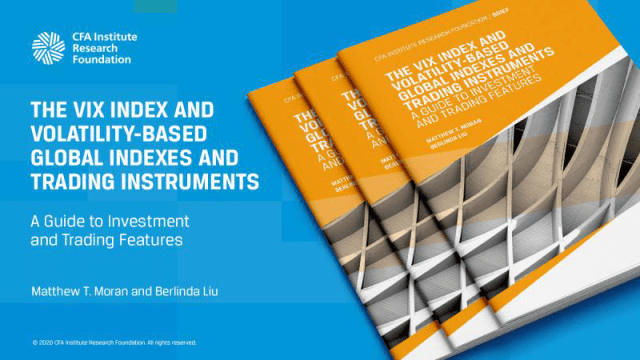[ad_1]
NMC Health (“NMC”) was founded in Abu Dhabi in 1975 and expanded to become the United Arab Emirates (UAE)’s largest health care company. Listed on the FTSE 100, NMC operated in 19 countries and employed 2,000 doctors and nearly 20,000 additional staff.
Then its fortunes took a turn.
Signs of trouble emerged in December 2019. Activist investor Muddy Waters published a report alleging that NMC had inflated cash balances, overpaid for assets, and understated its debt. This set off a chain of events that led NMC to reveal, inter alia, that its debt, at $6.6 billion, was over $4 billion more than the $2.1 billion it had declared in its 2018 financials.
Abu Dhabi Commercial Bank (ADCB), NMC’s major creditor, applied to a UK court to place NMC in administration. A restructuring consultancy has taken over NMC’s management and replaced the entire board. ADCB has also filed a criminal complaint, citing “fraud and forgery” against half a dozen people, NMC’s founder BR Shetty and former CEO Prasanth Manghat, among them.
While the Muddy Waters report and subsequent investigative articles suggest that reverse factoring, related party transactions, and corporate governance may have contributed to the debacle, my analysis, which is documented in a detailed Excel file that is available to anyone on request, will focus solely on NMC’s financial statements, specifically its annual reports from 2015 to 2018.
My inquiry seeks to answer two key questions:
- Were their red flags in NMC’s financial statements?
- Could the predictive models have anticipated NMC’s earnings manipulation and bankruptcy risk?
The Red Flags
1. Acquisitions
NMC went on a years-long shopping spree. Its total outlay on acquisitions from 2015 to 2018? Approximately $1.9 billion.
NMC had to keep acquiring in order to grow its revenue and profits. When a company relies so heavily on inorganic growth, it can create an incentive to fudge the numbers to ensure the revenue and profits stay strong.
NMC Aggregate Annual Purchase Considerations (US $1,000s)
| Total | 2018 | 2017 | 2016 | 2015 |
| 1,893,164 | 567,027 | 640,960 | 256,201 | 428,976 |
2. Massive Goodwill
What is especially striking is how much NMC overpaid for its acquisitions.
NMC’s Goodwill Accounting
| Average | 2018 | 2017 | 2016 | 2015 | |
| Additional goodwill (US $1,000s) | 390,329 | 471,573 | 233,906 | 345,072 | |
| Fair value of net identifiable assets (“NA,” US $1,000s) | 221,777 | 178,171 | 40,819 | 89,049 | |
| Goodwill as % of PC | 79% | 69% | 74% | 91% | 80% |
| Goodwill as % of NA | 350% | 176% | 265% | 573% | 388% |
| Goodwill on balance sheet (US $1,000s) | 1,440,291 | 1,057,765 | 567,338 | 341,420 | |
| Goodwill as % of total non-current assets | 51% | 58% | 58% | 49% | 40% |
| Goodwill as % of total assets | 30% | 37% | 36% | 24% | 23% |
| Profit after tax of acquirees for full year (US $1,000s) | 16,477 | 25,513 | 43,938 | 28,638 | |
| Profit as a % of PC | 2.9% | 3.98% | 17.15% | 6.68% |
What percentage of the acquired subsidiaries’ net assets does goodwill account for? About 350%, on average, over the four years, with a high of 573% in 2016 and a low of 176% in 2018.
What does that mean? For a company whose balance sheet showed net assets worth $100, NMC paid $350. Or overpaid by $250.
Moreover, goodwill constitutes an unusually high proportion of total assets which is hardly surprising given such overpayments. As of 31 December 2018, goodwill accounted for a whopping 37% of NMC’s total assets! For most mature companies, goodwill rarely exceeds 10% of total assets. I have never seen a publicly listed company report numbers like these.
Of course, a natural response might be: So what? It’s just an accounting entry, after all. I’ll tell you what: Goodwill has a lot of issues here.
- It is nothing but overpayment for subsidiaries. And NMC does not know why exactly it overpaid. Goodwill is a fancy way for accountants to account for this excess.
- The size of the goodwill means the overpayment might be unjustified. Hence the goodwill may soon have to be written off in full or in part. And profits will suffer massively.
- Another reason why a write-off is likely: Look at the post-tax profits of the acquiree companies as a percentage of the purchase price. It has been in steady decline since 2016, from 17% to 4% to 3%. So NMC is either desperately buying mediocre companies or paying exorbitant prices for good ones. Which is bad either way.
- But the big question: Why such obscene overpayments? Was NMC desperate to grow revenues and profits?
- The elevated goodwill could result from the deliberate undervaluation of tangible assets at the time of acquisition. Tangible assets like buildings and machines are depreciated, but goodwill never is. Given a fixed purchase consideration, undervaluing tangible assets means automatically overvaluing goodwill. If this is the case, NMC has saved millions in depreciation expenses over the years and hence overstated its net income.
- A significant proportion of the acquisitions was financed through debt. So overvalued assets were basically financed through expensive debt.
3. Excessive Debt
NMC’s Debt and Debt Ratios
| Adjusted | 2018 | 2017 | 2016 | 2015 | |
| Total debt (US millions) | 6,600 | 1,997 | 1,399 | 1,049 | 730 |
| Debt to equity | 4.86 | 1.5 | 1.2 | 1.1 | 1.46 |
| Debt to capital | 0.83 | 0.6 | 0.55 | 0.53 | 0.59 |
| Debt to FCF | 29 | 9 | 7 | 9 | 152 |
To be sure, hidden debt was what shoved NMC into the headlines. Debt-to-equity ratios (DERs) had been steadily increasing. But look at the “Adjusted” column. The shocker was the disclosure of up to $4 billion of hitherto undisclosed debt. That effectively revealed NMC for what it was: a massively indebted hospital chain.
The 4.86 to 1 DER and debt accounting for 83% of capital are scary enough. What’s scarier is the debt to free cash flow ratio of of 29. What does that mean? If the 2018 free cash flow held steady and ALL of it went to paying off the debt, the lenders would have to wait 29 years to be paid in full.
Why so much debt? Investigations are underway. But we know where a lot of it went. To financing acquisitions.
NMC Acquisition Financing
| 2018 | 2017 | 2016 | 2015 | |
| Financed by free cash flow | 47% | 34% | 49% | 1% |
| Financed by debt | 53% | 66% | 51% | 99% |
4. Unusually High Margins
Gross, operating, and net margins have been higher than normal, and they have been growing:
NMC Margins
| US Median | 2018 | 2017 | 2016 | 2015 | |
| Gross Profit Margin | 41% | 40% | 38% | 35% | |
| Operating Profit Margin | 2.5% | 18% | 17% | 15% | 13% |
| Net Profit Margin | 12% | 13% | 12% | 10% |
Why would the margins be high and rising? There are quite a few theories flying around, but what we can say is that there seems to be significant under provision for receivables.
NMC Receivables
| 2018 | 2017 | 2016 | 2015 | |
| Receivables Past Due (US $1,000s) | 197,113 | 160,803 | 103,759 | 73,269 |
| Percentage of Above Due to Total Receivables | 31% | 31% | 28% | 26% |
Receivables past due increased by US $124 million, or 170%, over three years. Yet there is no mention of any provision for bad debts anywhere in the financial statements. That’s even more strange given how the macroeconomic situation in the UAE deteriorated over the same period.
Predictive Ratios
But could we have predicted anything? Could the famed Altman Z-score and the Beneish model have anticipated bankruptcy and earnings manipulation, respectively?
The Altman Z-Score Ratio
The Z-score formula predicts the probability that a firm will go into bankruptcy within two years. It is derived as follows:
Z-score = 1.2T1 + 1.4T2 + 3.3T3 + 0.6T4 + .999T5, where:
- T1 = Working Capital / Total Assets (High = positive working capital)
- T2 = Retained Earnings / Total Assets (High = profitable + less debt financing)
- T3 = Earnings Before Interest and Taxes / Total Assets (High = high operating profits)
- T4 = Market Value of Equity / Total Liabilities (High = more investor confidence)
- T5 = Sales/ Total Assets (High = more sales efficiency)
The three Z-score categories are:
1. “Safe” = A Z-score over 2.99
2. “Grey” = A Z-score between 1.81 and 2.99
3. “Distress” = A Z-score below 1.81
Without going into the detailed calculations, in the lead-up to the revelations, NMC looked fine. It registered a Z-score of 2.93 in 2018 and an average Z-score of 3.18 from 2015 to 2018.
If we include the recently “uncovered” additional debt of approximately $5 billion, however, NMC’s Z-score for 2018 plummets to 1.83, which is awfully close to the distress zone. But this all comes with the benefit of hindsight and highlights two major weaknesses of this model: the inability to include off-balance-sheet liabilities and the dearth of independent variables.
The Beneish Model
The second predictive model is the Beneish model, or the so-called M-score. The M-Score is a multiple regression model with eight independent variables. It classifies a company as an earnings manipulator if its M-score is greater than -2.22.
The M-score is calculated as –4.84 + 0.920 (DSRI) + 0.528 (GMI) + 0.404 (AQI) + 0.892 (SGI) + 0.115 (DEPI) – 0.172 (SGAI) + 4.67 (Accruals) – 0.327 (LEVI)
NMC Beneish M-Scores
| 2018 | 2017 | 2016 |
| -1.85 | -1.53 | -1.69 |
All M-scores for NMC exceeded the cut off of -2.22. Indeed, the model predicted earnings manipulation as early as 2016 with three of the eight indicators flashing red.
The Final Accounting
To return to the questions we posed at this article’s outset:
Were there red flags in the financials? Yes.
Could the existing models have anticipated the bankruptcy threat? Probably not.
Could earnings manipulation have been predicted early on? Probably.
Of course, many questions remain unanswered. Who was responsible for the manipulation and who failed to spot it will hopefully come to light before long.
But until then, a quote from Charles Scott is worth remembering:
“Creativity is great — but not in accounting.”
For more insight from Binod Shankar, CFA, visit The Real Finance Mentor.
If you liked this post, don’t forget to subscribe to the Enterprising Investor.
All posts are the opinion of the author. As such, they should not be construed as investment advice, nor do the opinions expressed necessarily reflect the views of CFA Institute or the author’s employer.
Image credit: ©Getty Images / ©fitopardo
Professional Learning for CFA Institute Members
CFA Institute members are empowered to self-determine and self-report professional learning (PL) credits earned, including content on Enterprising Investor. Members can record credits easily using their online PL tracker.
[ad_2]
Image and article originally from blogs.cfainstitute.org. Read the original article here.



